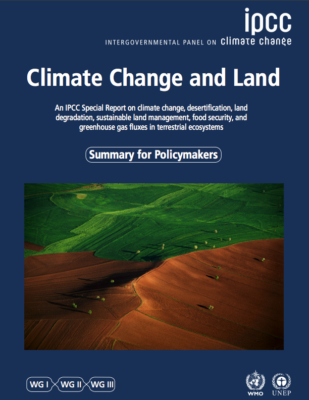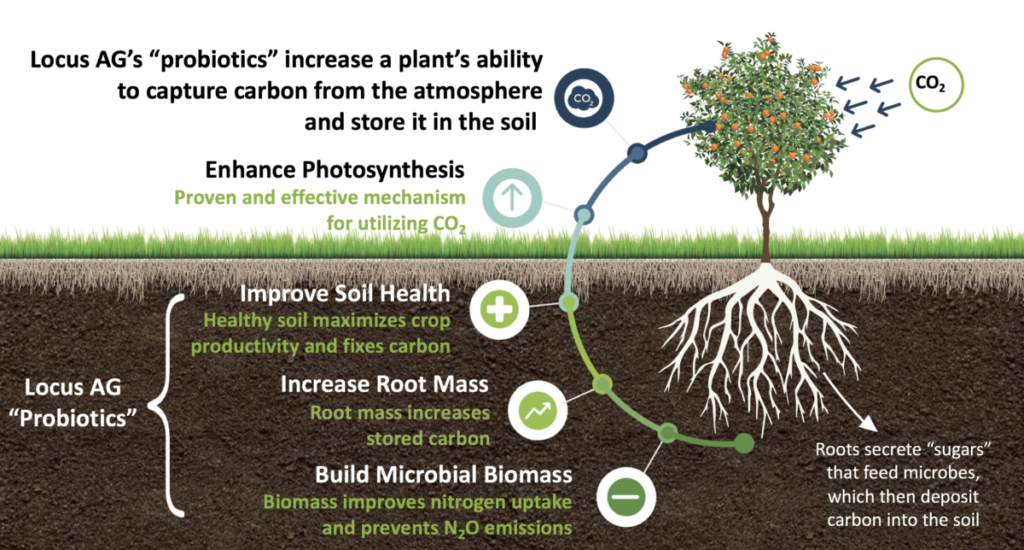
IPCC Land Concerns: What Can Be Done Immediately
By Keith Heidecorn
 The United Nations Intergovernmental Panel on Climate Change (IPCC) Special Report released yesterday is putting major focus on global land use—and stressing the imminent importance of changing management practices. It will not be enough to just stop the use of fossil fuels, but rather we need to completely transform our outlook on land use. The report shows that farming, forestry and other human land use is responsible for 23% of global greenhouse gas emissions. In order to keep global warming under 2⁰C it is crucial to find a way to reduce emissions from these sources, now.
The United Nations Intergovernmental Panel on Climate Change (IPCC) Special Report released yesterday is putting major focus on global land use—and stressing the imminent importance of changing management practices. It will not be enough to just stop the use of fossil fuels, but rather we need to completely transform our outlook on land use. The report shows that farming, forestry and other human land use is responsible for 23% of global greenhouse gas emissions. In order to keep global warming under 2⁰C it is crucial to find a way to reduce emissions from these sources, now.
 The IPCC report emphasizes where the focus should be, but what can be done today to have an immediate impact? The answer comes from the land itself. In the search to find solutions to climate change we often look up at the sky instead of down at the ground for answers. While carbon has highly negative effects in the atmosphere, it is vital for the health and productivity of soil and plants. In an article about distinguished soil professor Dr. Rattan Lal he says, “By using regenerative agricultural practices, soil can remove 65 to 75 parts per million of carbon dioxide from the atmosphere. That would mean in 25 to 50 years, the 135 billion tons of carbon lost into the atmosphere can be restored to the soil where it belongs.” Sounds simple; so how do we put carbon where it belongs? The answer is easy—we make carbon work for us, not against us. And the good news is there’s a method that’s already being successfully implemented. Growers across the U.S. are using microbial soil amendments, or “probiotics”, to sequester up to 8.6 metric tons of carbon dioxide equivalents per acre annually. The best part? The method is also increasing productivity by up to 43%—making it one of the only tools that can address both challenges simultaneously.
The IPCC report emphasizes where the focus should be, but what can be done today to have an immediate impact? The answer comes from the land itself. In the search to find solutions to climate change we often look up at the sky instead of down at the ground for answers. While carbon has highly negative effects in the atmosphere, it is vital for the health and productivity of soil and plants. In an article about distinguished soil professor Dr. Rattan Lal he says, “By using regenerative agricultural practices, soil can remove 65 to 75 parts per million of carbon dioxide from the atmosphere. That would mean in 25 to 50 years, the 135 billion tons of carbon lost into the atmosphere can be restored to the soil where it belongs.” Sounds simple; so how do we put carbon where it belongs? The answer is easy—we make carbon work for us, not against us. And the good news is there’s a method that’s already being successfully implemented. Growers across the U.S. are using microbial soil amendments, or “probiotics”, to sequester up to 8.6 metric tons of carbon dioxide equivalents per acre annually. The best part? The method is also increasing productivity by up to 43%—making it one of the only tools that can address both challenges simultaneously.

So how does it work? It turns out that plants (i.e. agricultural crops and grasslands) are extremely efficient at capturing carbon in the form of CO2 and storing it in the soil. However, just like the human body needs probiotics to support digestive health, so do agricultural soils. The use of microbes helps enhance the soil and root microbiome, resulting in increased soil biomass, root growth and plant vigor. In addition, soil organic carbon (SOC) content is increased, which not only sequesters carbon in the soil, but also boosts the overall productivity of crops. This is also an important factor for water usage challenges, because it is estimated that every 1% increase in SOC per acre allows soil to hold up to an extra 25,000 gallons of water per acre, reducing the demand for fresh water and keeping agricultural soils more drought resistant. This solution to regenerating the soil is an immediate and scalable solution to meet the call for the IPCC’s report for improved management of our land and allow growers to make a significant impact on combatting climate change today. Interested in learning more on the carbon sequestration process? Check out this video from Kiss the Ground regarding this process: https://www.youtube.com/watch?v=08TI1RKj54g&t= Locus Agricultural Solutions is dedicated to developing solutions that increase soil carbon and productivity in crops. You can find more information on our current soil “probiotics” here. Start Your Customized Program Today.
Want to learn how Locus AG vital biologicals can increase your yields and profits?
Fill out the form below and one of our agricultural experts will be in touch.


